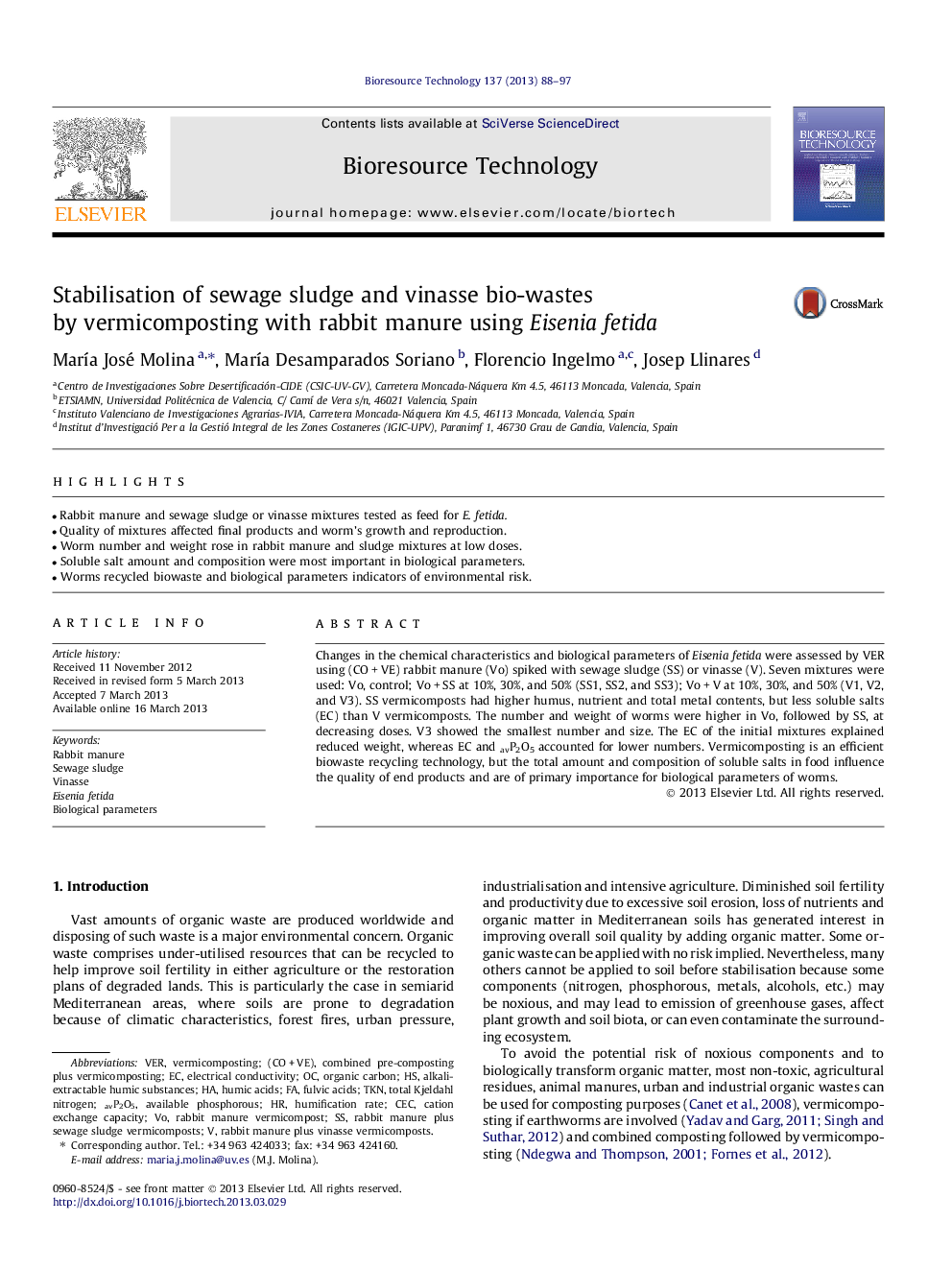| کد مقاله | کد نشریه | سال انتشار | مقاله انگلیسی | نسخه تمام متن |
|---|---|---|---|---|
| 681138 | 1460006 | 2013 | 10 صفحه PDF | دانلود رایگان |

• Rabbit manure and sewage sludge or vinasse mixtures tested as feed for E. fetida.
• Quality of mixtures affected final products and worm’s growth and reproduction.
• Worm number and weight rose in rabbit manure and sludge mixtures at low doses.
• Soluble salt amount and composition were most important in biological parameters.
• Worms recycled biowaste and biological parameters indicators of environmental risk.
Changes in the chemical characteristics and biological parameters of Eisenia fetida were assessed by VER using (CO + VE) rabbit manure (Vo) spiked with sewage sludge (SS) or vinasse (V). Seven mixtures were used: Vo, control; Vo + SS at 10%, 30%, and 50% (SS1, SS2, and SS3); Vo + V at 10%, 30%, and 50% (V1, V2, and V3). SS vermicomposts had higher humus, nutrient and total metal contents, but less soluble salts (EC) than V vermicomposts. The number and weight of worms were higher in Vo, followed by SS, at decreasing doses. V3 showed the smallest number and size. The EC of the initial mixtures explained reduced weight, whereas EC and avP2O5 accounted for lower numbers. Vermicomposting is an efficient biowaste recycling technology, but the total amount and composition of soluble salts in food influence the quality of end products and are of primary importance for biological parameters of worms.
Journal: Bioresource Technology - Volume 137, June 2013, Pages 88–97